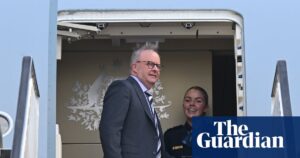
President Donald Trump concluded his state visit to the United Kingdom with a meeting with British Prime Minister Keir Starmer at Chequers, the prime minister’s country residence. The two leaders finalized a significant agreement on technology investment, promising to create thousands of jobs and inject billions into sectors like artificial intelligence, quantum computing, and nuclear energy. This meeting marked the end of a visit characterized by royal ceremonies and high-stakes discussions.
The announcement comes as Trump and Starmer also tackled complex issues such as steel tariffs and the ongoing conflicts in Ukraine and Gaza. Both leaders emphasized the strength of the US-UK relationship, with Starmer highlighting their mutual respect and Trump describing the countries’ bond as “unbreakable.”
Major Tech Investment Deal
The tech investment deal is a cornerstone of the discussions, aiming to foster collaboration between government, academia, and the private sector. Trump noted, “Our historic agreement on science and technology partnerships will create new government, academic work, and private sector cooperation in areas such as AI, which is taking over the world.”
This development follows a series of engagements intended to bolster economic ties between the two nations. Experts suggest that this agreement could serve as a model for future international tech collaborations, potentially setting a precedent for how major economies can work together in rapidly advancing fields.
Media Access Controversy
Meanwhile, the visit was not without its controversies. The press conference following the leaders’ meeting was marked by a notable absence of certain international media outlets, including Australia’s ABC. According to sources, the decision was made by Starmer’s office due to logistical constraints and weather concerns, limiting the number of journalists allowed in the main room at Chequers.
The Foreign Press Association confirmed that other media organizations, such as France24 and Japan’s NHK, were also placed in an adjoining room, sparking speculation about the motives behind these decisions. Some observers suggest this may be linked to Trump’s contentious relationship with the media, particularly following a recent clash with ABC correspondent John Lyons.
“We have been given no indication this is connected to the questions put to President Trump by ABC Americas editor John Lyons this week,” stated the ABC.
Royal Ceremonies and Public Perception
The British media provided extensive coverage of Trump’s visit, focusing heavily on the royal ceremonies. The Times, The Telegraph, and The Sun prominently featured images of Trump with King Charles and Queen Camilla, while The Daily Mail highlighted Princess Catherine’s attire. The Financial Times captured Trump inspecting an honor guard, underscoring the ceremonial aspects of the visit.
Despite the pageantry, the press also reported on Trump’s address at the state banquet, where he likened the US-UK relationship to “two notes in the same chord.” However, there was limited coverage of King Charles’s remarks on opposing tyranny in Europe, a message that resonated with Ukrainian President Volodymyr Zelensky. Zelensky expressed gratitude on social media, acknowledging Britain’s leadership in defending freedom.
Implications and Future Prospects
The tech investment deal and the discussions on trade and foreign policy signal a strengthening of US-UK ties, with potential long-term benefits for both nations. However, the media access controversy highlights ongoing challenges in Trump’s interactions with the press, which could influence future diplomatic engagements.
As Trump departs for the White House, the focus will shift to the implementation of the tech agreement and its impact on both economies. The visit underscores the delicate balance of diplomacy, media relations, and international collaboration in today’s geopolitical landscape.







